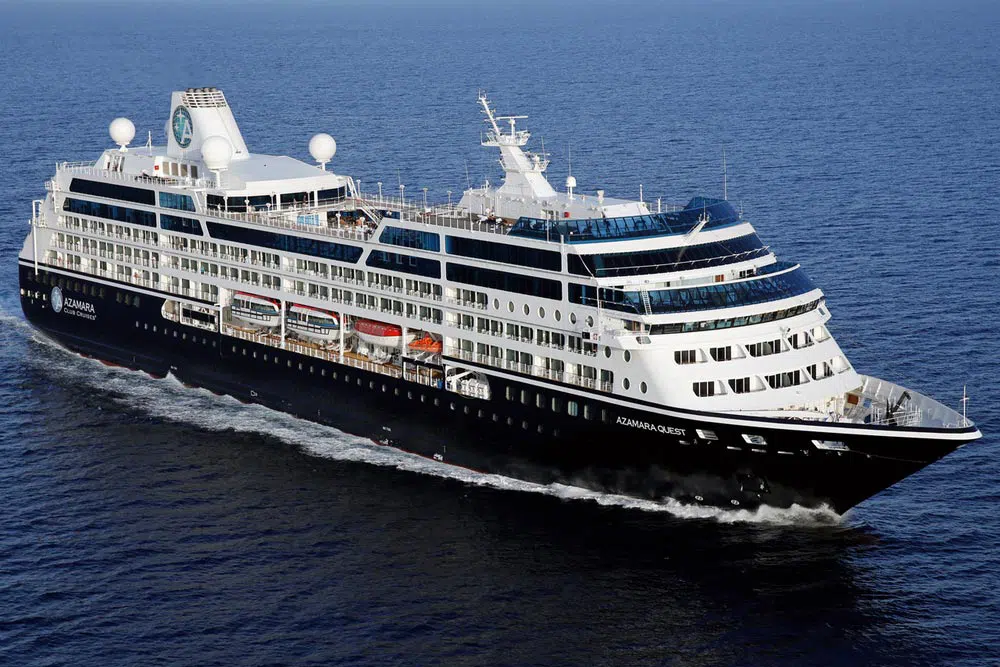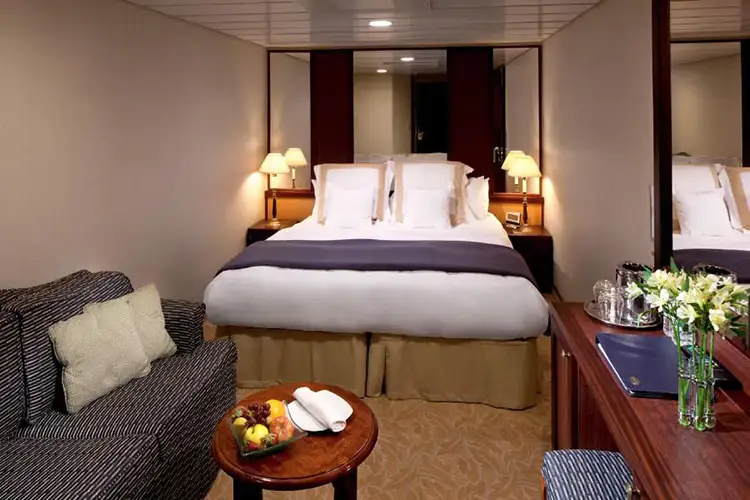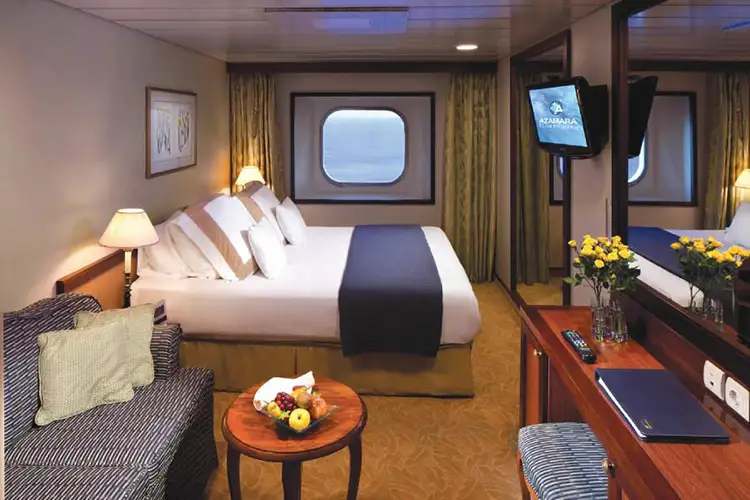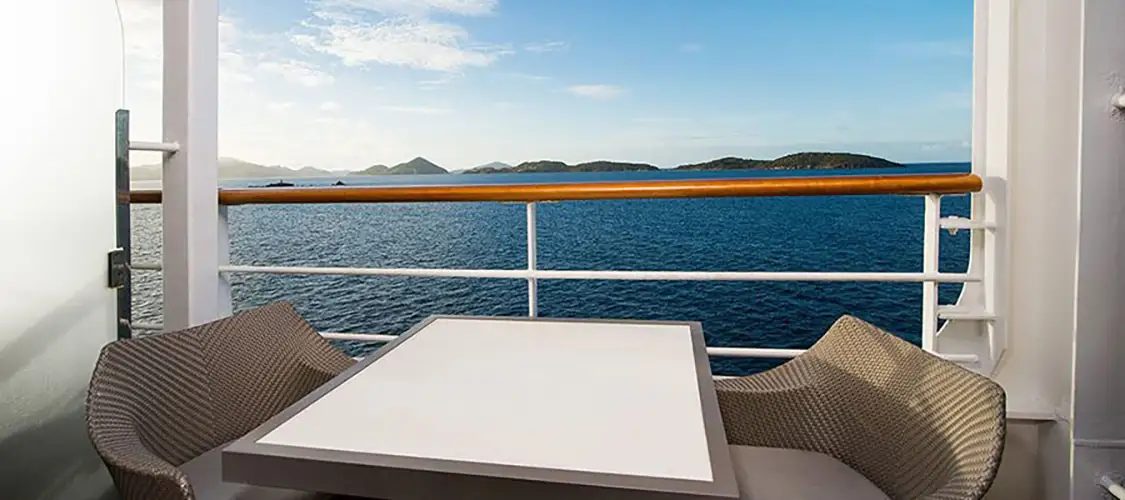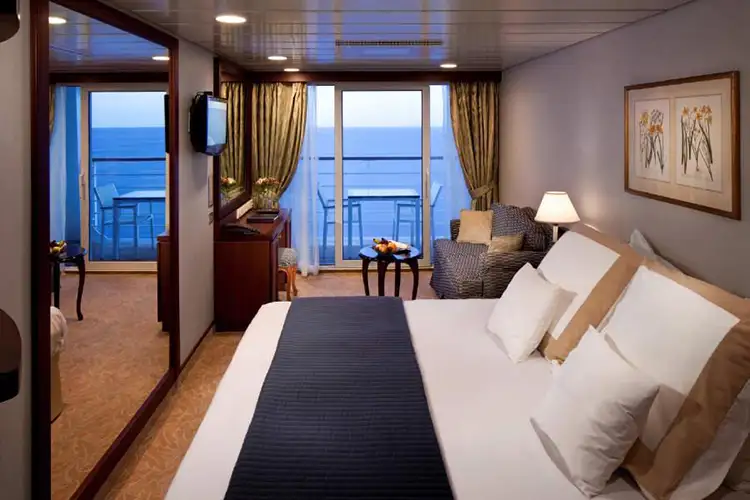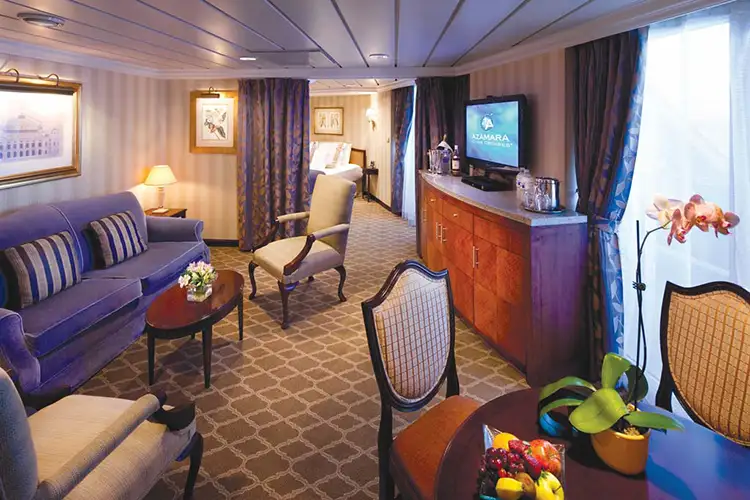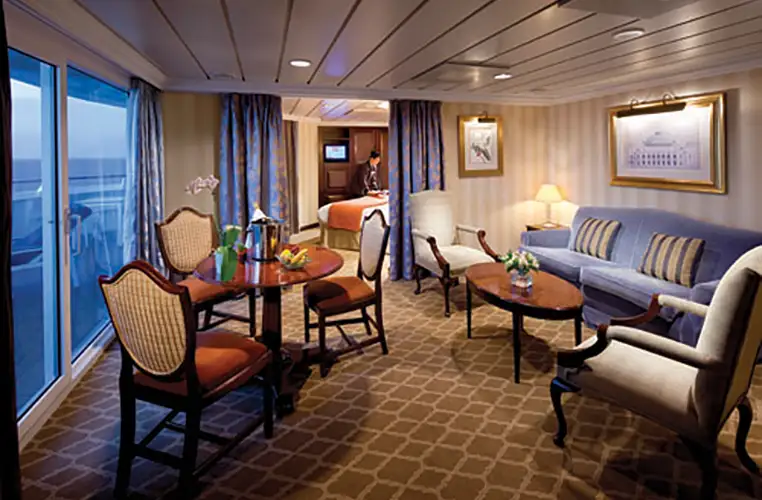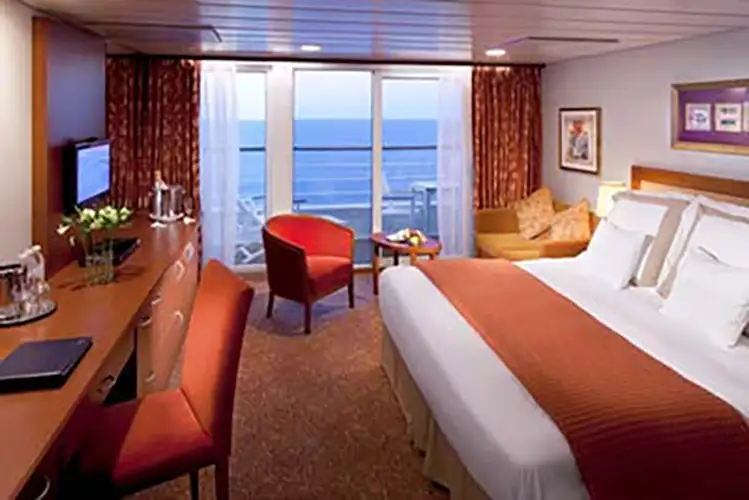Azamara South America: 13 nights from San Antonio with Azamara Quest
Mar 2, 2026
Chile, Peru, Panama
Cruise itinerary
Departure Port: San Antonio ➞
Landing: Balboa
-
Monday, March 2, 2026 - 5:00 PMSan Antonio
-
Tuesday, March 3, 2026 11:00 AM - 5:00 PMCoquimbo
-
Wednesday, March 4, 2026Navigation
-
Thursday, March 5, 2026 9:30 AM - 8:00 PMIquique
-
Friday, March 6, 2026 8:00 AM - 10:00 PMArica
-
Saturday, March 7, 2026Navigation
-
Sunday, March 8, 2026 8:00 AM - 8:00 PMPisco
-
Monday, March 9, 2026 7:30 AM - not foundLima
-
Tuesday, March 10, 2026 not found - 6:00 PMLima
-
Wednesday, March 11, 2026Navigation
-
Thursday, March 12, 2026Navigation
-
Friday, March 13, 2026Navigation
-
Saturday, March 14, 2026 9:30 AM - not foundBalboa
-
Sunday, March 15, 2026 9:00 AMBalboa

San Antonio
San Antonio, located along the coast of the Pacific Ocean, is a vibrant and economically significant city that perfectly combines its strategic port operations with rich cultural and historical elements. The Port of San Antonio is the busiest port in Chile and one of the largest in South America. It plays a crucial role in the country's economy, handling a significant portion of Chile’s imports and exports and making San Antonio one of Chile’s most important port cities.
The city is reknown for its beautiful beaches, historic sites and cultural events. Firstly, San Antonio boasts several beaches that attract both locals and tourists, such as Llolleo Beach and Cartagena Beach, which are popular for their scenic views and recreational activities.
Secondly, the city has several historical sites and landmarks, including the San Antonio Lighthouse and the picturesque Paseo Bellamar, a waterfront promenade. Finally, San Antonio hosts cultural events and festivals that showcase local traditions, music and cuisine.
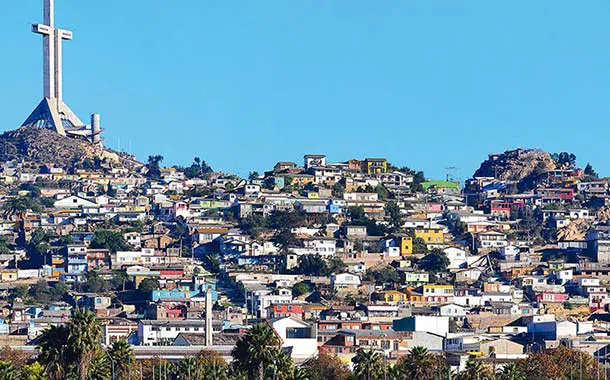
Coquimbo
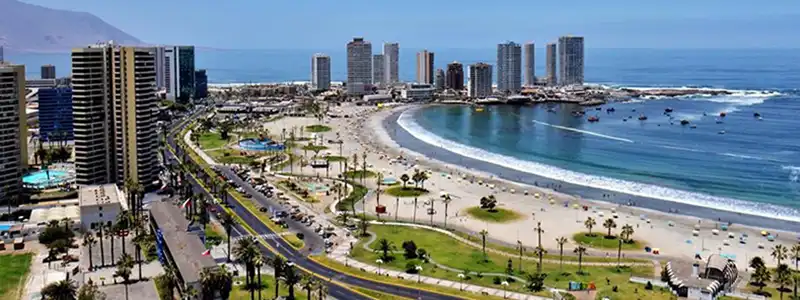
Iquique
Iquique is a city in northern Chile and a bishopric overlooking the Pacific Ocean. It is the capital of the Tarapacá Region (First Region of Chile) and the Province of Iquique and has approximately 221,000 inhabitants.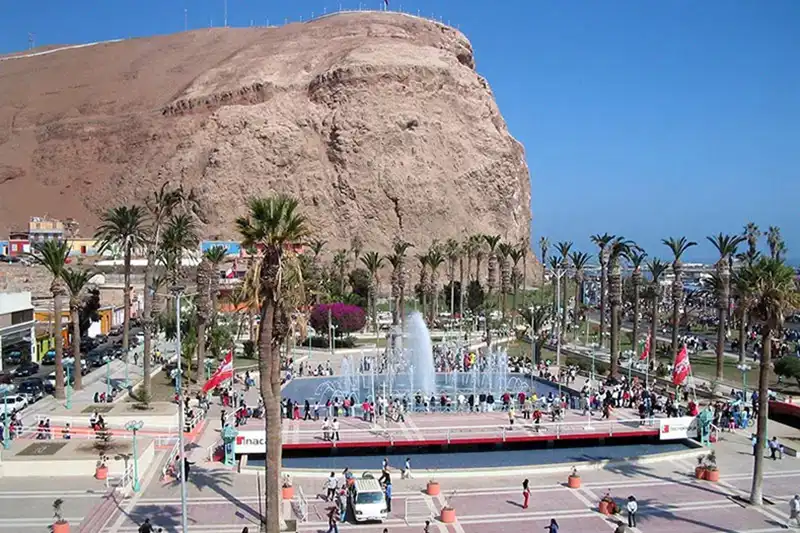
Arica
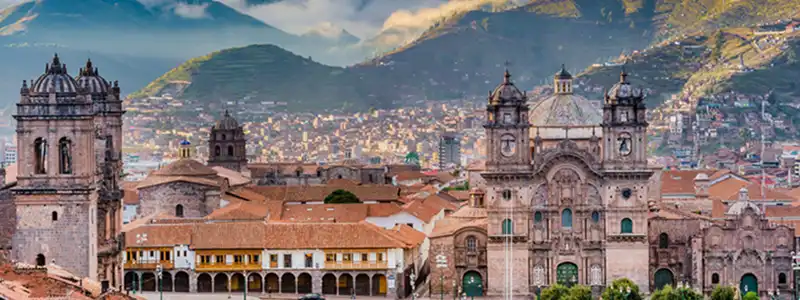
Pisco
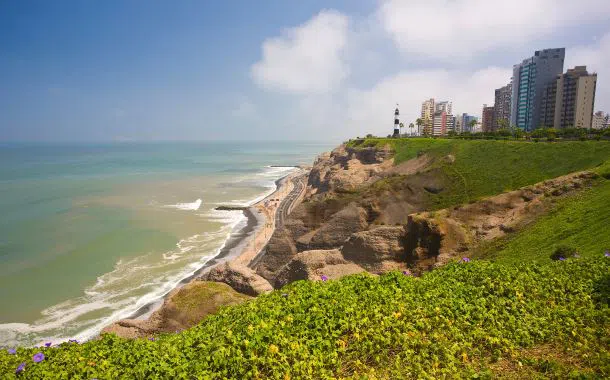
Lima
Located on the Pacific coast of Peru, South America, in a region sheltered from oasis and trade winds, Lima is 12 km from the port of Callao. At the base of the San Cristobal hill, the city is crossed by the Rio Rimac. Called the ‘City of Kings’ by the Spanish conqueror Francisco Pizarro in 1535, Lima was chosen as the capital of the country in 1821, year of its Indipendence. A coastal city that has defended various invasions and welcomed many cultures. On the one hand, the traces of its past are still visible, for example among various monuments and buildings. On the other hand, the city fully assumes its position as a modern Peruvian capital. Developed strongly on industry and tourism, continuing to attract masses, Miraflores and San Isidro are the hub of Lima's social and commercial life. Known for its legendary fog, it has a special charm of colour and animation. Discover its historic center, a great spectacle of colonial architecture, including ‘Paseo de la Republica’, San Martin Square, Plaza de Armas and surrounding monuments: the Government Palace, the Cathedral, the Archbishop's Palace, the Forsaken train station, and the Moorish-Spanish colonial houses. Decorated with beautiful carved wooden balconies along the old streets, you will be captivated by the combination of its past and 21st century modernity. Strolling through the historic center, you will taste traditional dishes and be greeted by a truly warm population! Between May and mid-September, the city of Lima is prone to humidity and clouds. November to April are the best months to visit the capital, from January to March the heat is very high.Located on the coast of the Pacific in Peru, South America, in a region sheltered from oases and trade winds, Lima is 12 km from the port of Callao. At the foot of the San Cristobal hill, the city is crossed by the Rimac River. Called the "City of Kings" by the Spanish conqueror Francisco Pizarro in 1535, Lima was chosen as the capital since the country's independence in 1821. Coastal city that has defended the various invasions and welcomed many cultures, it bears the traces of the past (including various monuments and buildings) and fully assumes its position as the Peruvian capital. Strongly developed in the industry and tourism sector, continuing to attract the masses, Miraflores and San Isidro are the focus of Lima's social and commercial life. Known for its legendary fog, it has a special charm, made up of colors and animations. You will discover its historic center, a great show of colonial architecture, including "Paseo de la Republica", Plaza San Martin, Plaza de Armas, and surrounding monuments: the Government Palace, the Cathedral, the Archbishop's Palace, the Forsaken railway station, and the colonial houses in Moorish-Spanish style. Decorated with splendid carved wooden balconies, along the old streets, they will fascinate you thanks to its elusive mix of Spanish history and the modernity of the 21st century. Strolling through the historic center, you will taste traditional dishes and be welcomed by a truly warm population! Between May and mid-September, the city of Lima is subject to humidity and clouds. From November to April are the best months to visit the capital, from January to March the heat is very high.

Lima
Located on the Pacific coast of Peru, South America, in a region sheltered from oasis and trade winds, Lima is 12 km from the port of Callao. At the base of the San Cristobal hill, the city is crossed by the Rio Rimac. Called the ‘City of Kings’ by the Spanish conqueror Francisco Pizarro in 1535, Lima was chosen as the capital of the country in 1821, year of its Indipendence. A coastal city that has defended various invasions and welcomed many cultures. On the one hand, the traces of its past are still visible, for example among various monuments and buildings. On the other hand, the city fully assumes its position as a modern Peruvian capital. Developed strongly on industry and tourism, continuing to attract masses, Miraflores and San Isidro are the hub of Lima's social and commercial life. Known for its legendary fog, it has a special charm of colour and animation. Discover its historic center, a great spectacle of colonial architecture, including ‘Paseo de la Republica’, San Martin Square, Plaza de Armas and surrounding monuments: the Government Palace, the Cathedral, the Archbishop's Palace, the Forsaken train station, and the Moorish-Spanish colonial houses. Decorated with beautiful carved wooden balconies along the old streets, you will be captivated by the combination of its past and 21st century modernity. Strolling through the historic center, you will taste traditional dishes and be greeted by a truly warm population! Between May and mid-September, the city of Lima is prone to humidity and clouds. November to April are the best months to visit the capital, from January to March the heat is very high.Located on the coast of the Pacific in Peru, South America, in a region sheltered from oases and trade winds, Lima is 12 km from the port of Callao. At the foot of the San Cristobal hill, the city is crossed by the Rimac River. Called the "City of Kings" by the Spanish conqueror Francisco Pizarro in 1535, Lima was chosen as the capital since the country's independence in 1821. Coastal city that has defended the various invasions and welcomed many cultures, it bears the traces of the past (including various monuments and buildings) and fully assumes its position as the Peruvian capital. Strongly developed in the industry and tourism sector, continuing to attract the masses, Miraflores and San Isidro are the focus of Lima's social and commercial life. Known for its legendary fog, it has a special charm, made up of colors and animations. You will discover its historic center, a great show of colonial architecture, including "Paseo de la Republica", Plaza San Martin, Plaza de Armas, and surrounding monuments: the Government Palace, the Cathedral, the Archbishop's Palace, the Forsaken railway station, and the colonial houses in Moorish-Spanish style. Decorated with splendid carved wooden balconies, along the old streets, they will fascinate you thanks to its elusive mix of Spanish history and the modernity of the 21st century. Strolling through the historic center, you will taste traditional dishes and be welcomed by a truly warm population! Between May and mid-September, the city of Lima is subject to humidity and clouds. From November to April are the best months to visit the capital, from January to March the heat is very high.
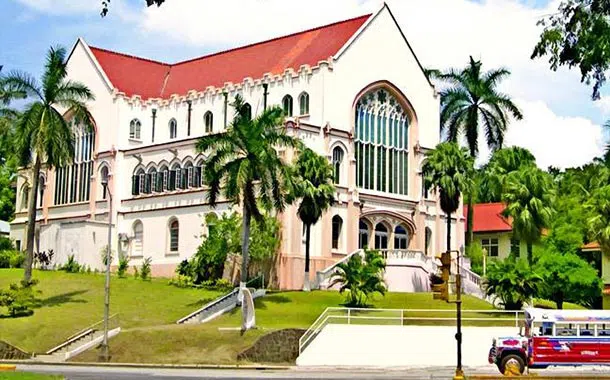
Balboa
Balboa, located at the end of the Panama Canal, is known for being the port of Panama City. Geographically it is close to the canal docks and the Ancón hill behind it which separates it from Panama City.
Balboa owes its name to the Spanish explorer Vasco Núñez de Balboa who reached this land in 1914. Before being annexed to Panama City as a district, Balboa was for a long time controlled by the Americans who took care of the construction of many of the buildings and structures still present today within the city.
The canal on one side and the hills on the other create an enchanting landscape where the blue of the sea and the green of the hills merge in a unique way creating a perfect combination. Among the various activities that can be carried out in Balboa, hiking is certainly one of the main ones. The paths immersed in the green will allow you to fully experience the beauty of the nature of this place and to enjoy the suggestive view of all its beauties and uniqueness from above.
The best way to reach the city is on board a cruise ship. Choose a cruise that departs from Balboa or has the city as a stop to admire up close the unique beauty of this territory and to set off to discover Central America, the Caribbean, and the Mediterranean.

Balboa
Balboa, located at the end of the Panama Canal, is known for being the port of Panama City. Geographically it is close to the canal docks and the Ancón hill behind it which separates it from Panama City.
Balboa owes its name to the Spanish explorer Vasco Núñez de Balboa who reached this land in 1914. Before being annexed to Panama City as a district, Balboa was for a long time controlled by the Americans who took care of the construction of many of the buildings and structures still present today within the city.
The canal on one side and the hills on the other create an enchanting landscape where the blue of the sea and the green of the hills merge in a unique way creating a perfect combination. Among the various activities that can be carried out in Balboa, hiking is certainly one of the main ones. The paths immersed in the green will allow you to fully experience the beauty of the nature of this place and to enjoy the suggestive view of all its beauties and uniqueness from above.
The best way to reach the city is on board a cruise ship. Choose a cruise that departs from Balboa or has the city as a stop to admire up close the unique beauty of this territory and to set off to discover Central America, the Caribbean, and the Mediterranean.
